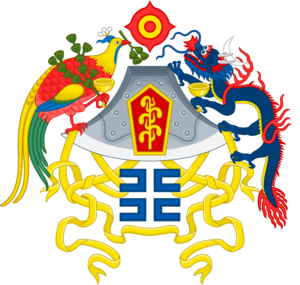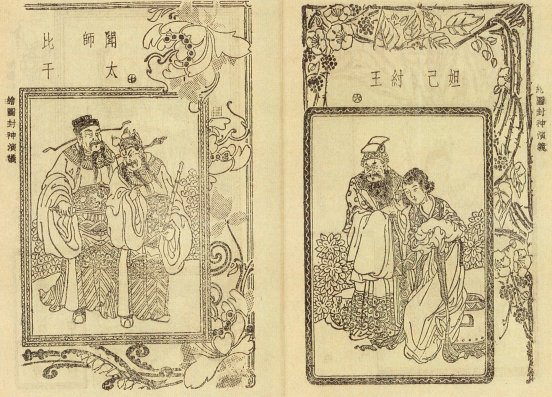In the Chinese novel Fengshenyanyi (Investiture of the Deities) that tells the story about the fall of the Shang dynasty and rise of the Zhou dynasty in a mythological manner. Gods and deities have to come into this story of the fall of Shang dynasty because the Chinese of that time were generally superstitious and were more willing to accept the change of the monarchy if it was said to be an edict from the heaven.
Who is Nezha?
In the novel, Nezha was the third son of Yin Shi-niang and Li Jing, Chentangguan’s chief military commander (hence the name San-tai-tze). Yin Shi-niang’s gestation was an unusually long period of 3 years and 6 months when she was carrying Nezha. Yin Shi-niang gave birth to mass of flesh at the end of the pregnancy.
Thinking it was a demon, Li Jing drew out his demon-slaying sword and slashed open the mass of flesh and found Nezha nested in it. Due to this eventful birth, Li Jing believed that this son of his was a calamity star from heaven and never liked him.
 True enough, Nezha brought troubles to the Li family. Playful Nezha played by the beach and caused a stir in the East Sea. Ao Bing, he third prince of the Dragon King of the East Sea (Tunghailongwang), undermined the boy’s abilities and was killed in the wrangle. To avenge for his son’s death, the Dragon King wanted to take Nezha’s life. The Dragon King of the East Sea raged and created storms over Chentangguan, drowning people and leaving many homeless.
True enough, Nezha brought troubles to the Li family. Playful Nezha played by the beach and caused a stir in the East Sea. Ao Bing, he third prince of the Dragon King of the East Sea (Tunghailongwang), undermined the boy’s abilities and was killed in the wrangle. To avenge for his son’s death, the Dragon King wanted to take Nezha’s life. The Dragon King of the East Sea raged and created storms over Chentangguan, drowning people and leaving many homeless.
To end the troubles in Chentangguan, Nezha xuerouhuanmu, xiaoguhuanfu (cut his flesh piece by piece to return to the mother who bore him the flesh, cut the bones to return to the father who gave him life) and died by the sea. The act of xuerouhuanmu, xiaoguhuanfu was also to sever all ties with his parents, so that he owed them nothing, and all troubles to the Li family would end.
Several attempts to bring Nezha back to life by Yin Shi-niang were either unsuccessful or foiled by Li Jing, who thought Nezha had brought enough shame for the family and should never come back. Until Yin Shi-niang sought help from the immortal Taiyi zhenren who used lotus roots to reconstruct a body for the soul to reside in. Tales of the Fengshenyanyi also suggested that Nezha got a true flesh-body in a wager with Shengongbao when they competed against each other in their head-flying magic skills (feitoushu).
Nezha’s reconciliation with his father
Nezha reconciled with his father Li Jing and worked together in the military to fight against the Shang troops, speeding up the inevitable fall of the Shang dynasty as the Shang ruler had incur the wrath of heaven.
Significance of the story surrounds the filial piety and loyalty, the 2 most honored qualities. Nezha’s temperament changed after seeing how his mother toiled to bring him back to life and he learned how to be filial. Nezha’s loyalty was pledged to the leader who led by actions for the good of his people.
The mythological way the story was told made Nezha a legendary hero and is worshipped as a deity who slay evil demons. Parents who have problems taking their children in hand would also pray at the San-tai-tze temple, hoping that their children would become more responsible and well-behaved like Nezha did at the end of Fengshenyanyi.





